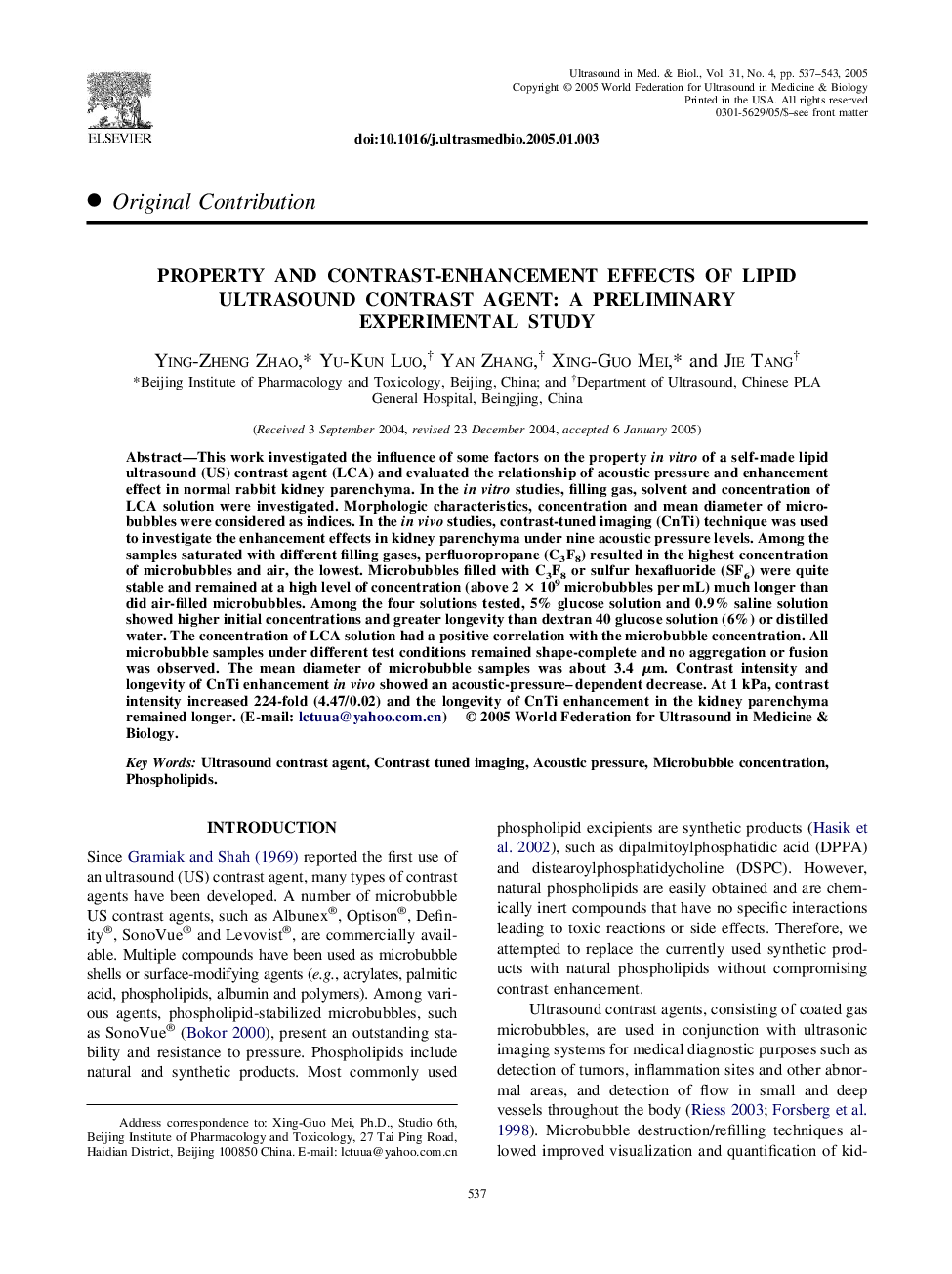| Article ID | Journal | Published Year | Pages | File Type |
|---|---|---|---|---|
| 10692811 | Ultrasound in Medicine & Biology | 2005 | 7 Pages |
Abstract
This work investigated the influence of some factors on the property in vitro of a self-made lipid ultrasound (US) contrast agent (LCA) and evaluated the relationship of acoustic pressure and enhancement effect in normal rabbit kidney parenchyma. In the in vitro studies, filling gas, solvent and concentration of LCA solution were investigated. Morphologic characteristics, concentration and mean diameter of microbubbles were considered as indices. In the in vivo studies, contrast-tuned imaging (CnTi) technique was used to investigate the enhancement effects in kidney parenchyma under nine acoustic pressure levels. Among the samples saturated with different filling gases, perfluoropropane (C3F8) resulted in the highest concentration of microbubbles and air, the lowest. Microbubbles filled with C3F8 or sulfur hexafluoride (SF6) were quite stable and remained at a high level of concentration (above 2 à 109 microbubbles per mL) much longer than did air-filled microbubbles. Among the four solutions tested, 5% glucose solution and 0.9% saline solution showed higher initial concentrations and greater longevity than dextran 40 glucose solution (6%) or distilled water. The concentration of LCA solution had a positive correlation with the microbubble concentration. All microbubble samples under different test conditions remained shape-complete and no aggregation or fusion was observed. The mean diameter of microbubble samples was about 3.4 μm. Contrast intensity and longevity of CnTi enhancement in vivo showed an acoustic-pressure-dependent decrease. At 1 kPa, contrast intensity increased 224-fold (4.47/0.02) and the longevity of CnTi enhancement in the kidney parenchyma remained longer. (E-mail: lctuua@yahoo.com.cn)
Related Topics
Physical Sciences and Engineering
Physics and Astronomy
Acoustics and Ultrasonics
Authors
Ying-Zheng Zhao, Yu-Kun Luo, Yan Zhang, Xing-Guo Mei, Jie Tang,
